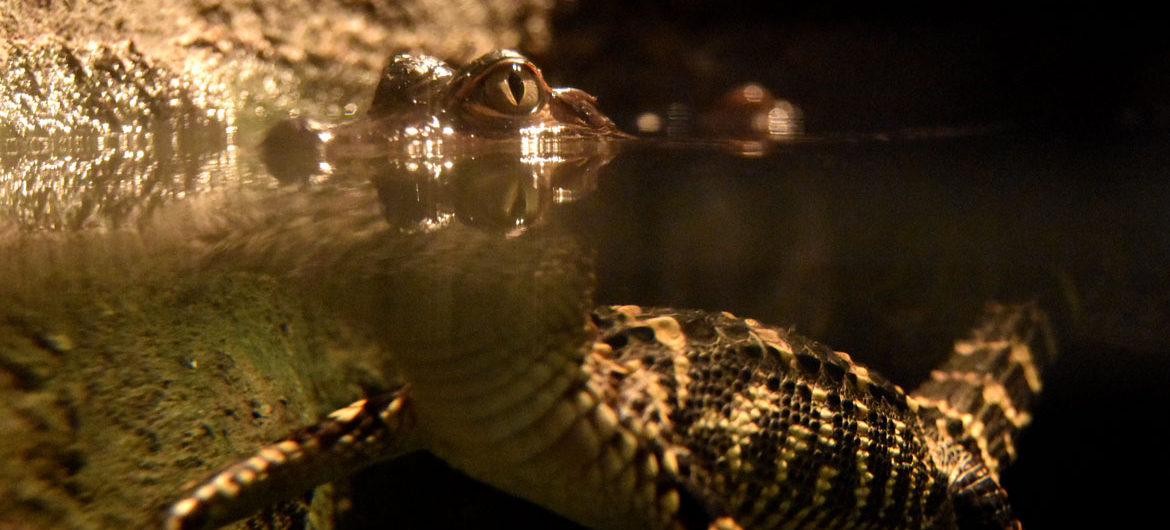Crocodiles, alligators and other crocodilians have flourished for more than 200 million years and now they’ve come to Boston’s Museum of Science in the exhibit “Crocs: Ancient Predators in a Modern World” on view from May 20 to Sept. 3. The show, organized by Clyde Peeling’s Reptiland in Pennsylvania, offers 11 live critters as well as lots of interesting information about these creatures. Geordi Hall, the exhibit’s on-site zookeeper, kindly shared fun facts and answered our questions about whether crocodiles make good pets, what the crocodilians will eat during the exhibition, how much they poop, and the truth about crocodile tears.
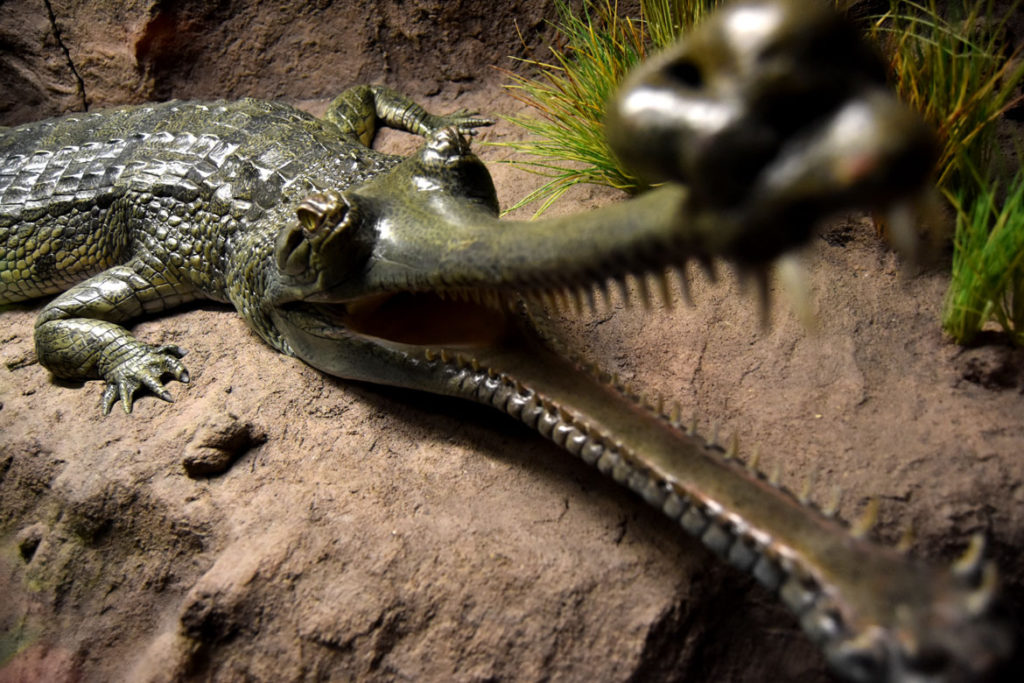
Help Wonderland keep producing our great coverage of local arts, cultures and activisms (and our great festivals) by contributing to Wonderland on Patreon. And sign up for our free, weekly newsletter so that you don’t miss any of our reporting.
Would a crocodile be a fun addition to one’s swimming pool?
“Unfortunately, no, crocodiles are not good to put in a swimming pool,” Hall says. Alligators wouldn’t be good in your pool either, but “alligators are kind of scardey-cats. They swim away from us. Crocodiles think we smell interesting and swim toward us.”
Do crocodiles make good pets?
No. Hall says, “They require a lot of food, they leave giant poops, and they’re very aggressive.”

What do they eat while at the museum?
“Thawed-out rodents,” Hall says. “Since they’re reptiles they don’t need to eat every day.” Only need fed two times a week because of their slower metabolisms. The African dwarf crocodile, which grows to 3- to 4-feet-long, gets fed “small rats.” Others are fed mice.
Do all crocodilians only eat meat?
Consider the Caiman of South America. “It’s not fully documented, but there’s a lot of evidence to suggest that they may be omnivorous. They’ve been seen eating fruits and vegetables,” Hall says. “It’s a very opportunistic kind of thing.”
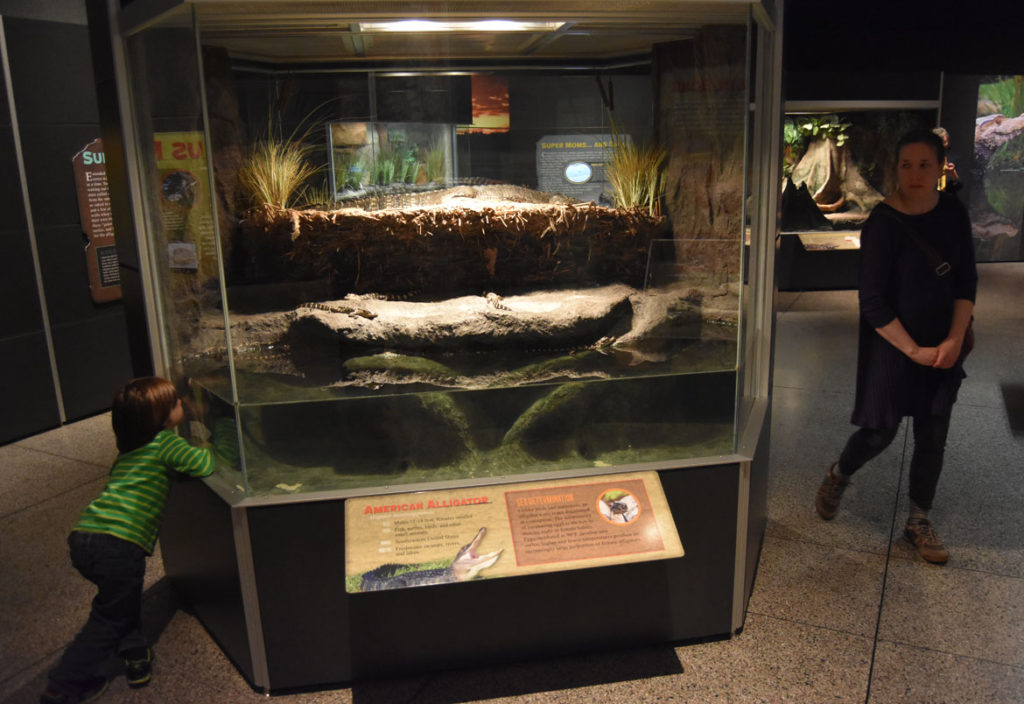
How big is crocodile poop?
“It’s not elephant-sized, but it’s pretty good sized,” Hall says. “You’d be surprised what comes out of their body sometimes.”
Do crocodiles have a second eyelid?
Crocodilians “have a second eyelid that they will close up,” Hall says. “They’re natural swim goggles that cover the eyes so they can swim around and not get water in their eyes.” They’ve also got flaps in their nostrils that they can close to keep water out.
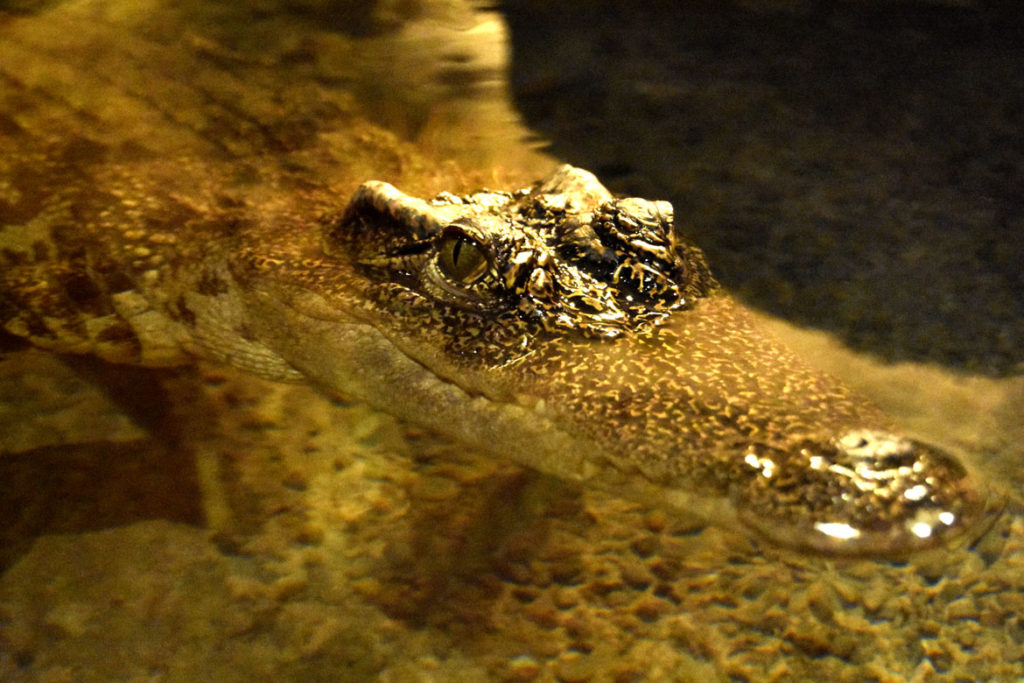
Do crocodiles talk?
“They all vocalize,” Hall says. Usually to call to potential mates or rivals. West African dwarf crocodiles “have terrifying sounds that make us jump. … It’s very loud. It can only be described as a hissing-grunt.”
Are crocodile tears a real thing?
“They is actually a very real thing,” Hall says. “Quite a few species of crocodiles tend to tear when they’re eating their food. [Scientists] don’t know why they do it.”
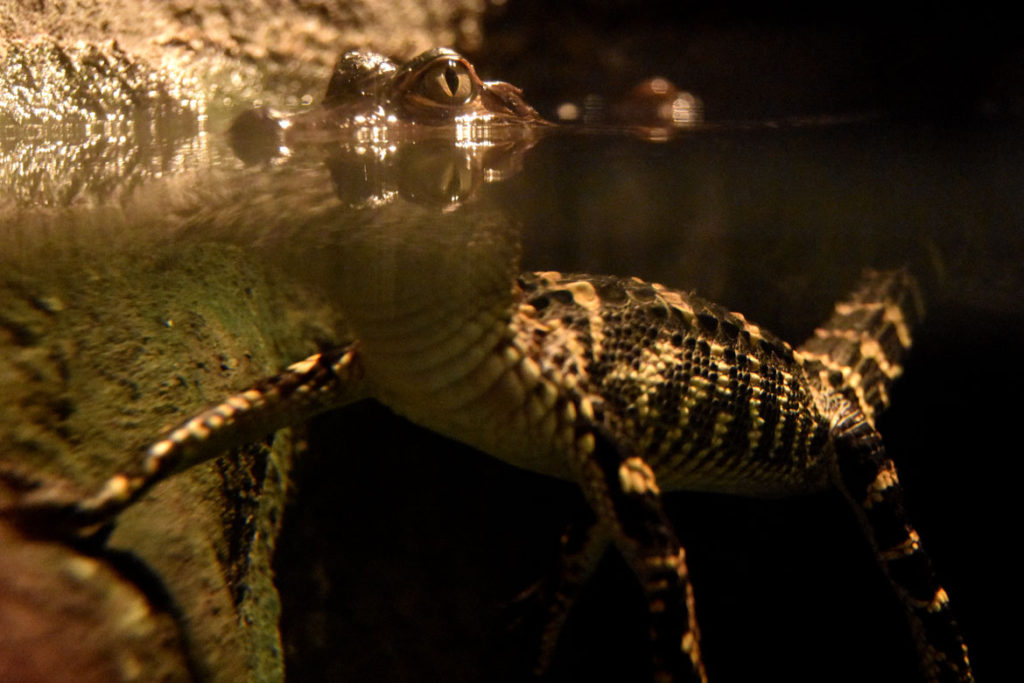
What are osteoderms?
The West African dwarf crocodile, Hall says, “They’re also known as the bony crocodile. Their scientific name is Osteolaemus, which pretty much means ‘bony neck.’” All crocodilians have bony deposits or osteoderms at their necks, backs and on the back of their tails. “They have osteoderms all the way around their neck. Which makes them hard to get ahold of. Which give them an extra level of protection.”
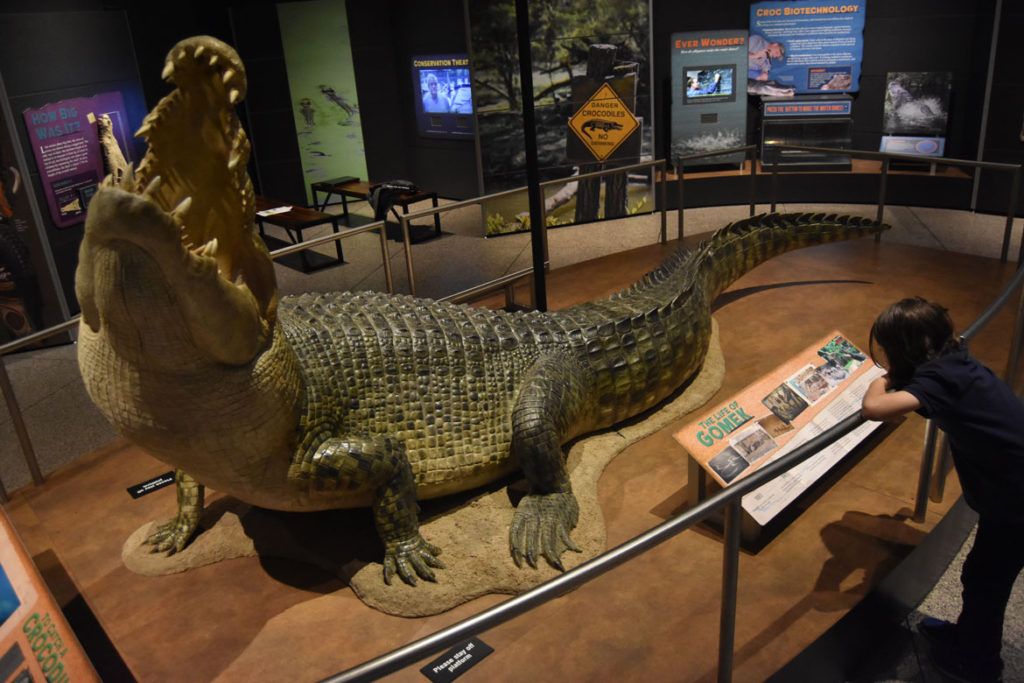
Help Wonderland keep producing our great coverage of local arts, cultures and activisms (and our great festivals) by contributing to Wonderland on Patreon. And sign up for our free, weekly newsletter so that you don’t miss any of our reporting.
